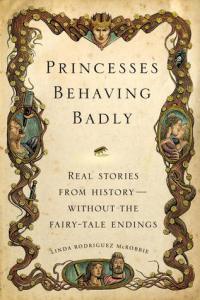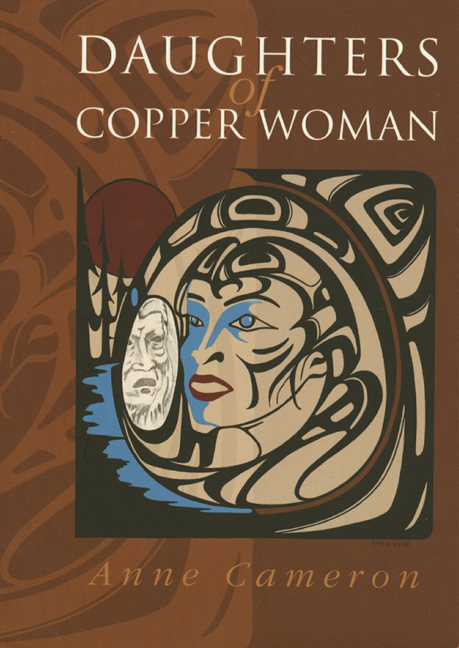
by fljustice | Mar 11, 2015 | Essays/Research, History, Wonderful Women
Boudica, Warrior Queen
It’s Women’s History Month and I’ve exhausted my favorite topic of Hypatia, Lady Philosopher of Alexandria. Time to move on to another fascinating woman who has been extensively mythologized: Boudica, Queen of the Iceni (a British Celtic tribe) in the first century AD. For those of you unfamiliar with her story, here is a brief summary.
Some Background

Image of Boudica in stained glass in Colchester Town Hall.
Julius Caesar invaded Britain in 55 BC and again in 56 where he had some military success against local tribes. He withdrew to Gaul and never returned to Britain. Roman influence in Britain grew over the next 80 years due to increased trade. The British tribes quarreled and Caratacus, the leader of the Catuvellauni expanded his tribe’s territory at the expense of the Atrebates. The Atrebates chief Verica appealed to Rome and gave the Emperor Claudius an excuse to invade Britain in AD 43. General Plautius led the assault and Claudius joined him with reinforcements. They took Caratacus’ stronghold Camulodunum (modern Colchester) and established the first Roman colonia—towns founded for Roman citizens—on British soil. Eleven tribal kings surrendered. Claudius declared Britain a Roman province.
Caractacus continued to fight, leading the western tribes in Wales in guerrilla actions against Plautius’ successor Scapula, known for his brutal pacification campaign in the south. Scapula finally defeated Caractacus in 51. Caractacus fled a to the Brigantes tribe (in modern-day Yorkshire) but was betrayed by their Queen Cartimandua and handed over to the Romans. In 59 and 60, the Roman governor Caius Suetonius Paulinus (during Nero’s reign) led the successful invasion and pacification of Wales and the Isle of Anglesey, the seat of the Druids. (more…)

by fljustice | Sep 19, 2014 | Books, Fiction, Free stuff, Reviews, Wonderful Women
Book Review and Giveaway:
“Hand of Fire” by Judith Starkston
I get pitched a lot of books. I usually accept about one a month. I like most of them and write a paragraph or two on GoodReads.com, LibraryThing.com or Amazon.com. A very few get the full blog treatment. Hand of Fire by Judith Starkston is one of those I want to enthusiastically share with my fellow readers. Her novel has all the elements I look for in historical fiction: compelling characters, engaging plot, and fascinating setting.
About the book:
 The Trojan War threatens Troy’s allies and the Greek supply raids spread. A young healing priestess, designated as future queen, must defend her city against both divine anger and invading Greeks. She finds strength in visions of a handsome warrior god; will that be enough when the half-immortal Achilles attacks? Hand of Fire, a tale of resilience and hope, blends history and legend in the untold story of Achilles’s famous captive, Briseis.
The Trojan War threatens Troy’s allies and the Greek supply raids spread. A young healing priestess, designated as future queen, must defend her city against both divine anger and invading Greeks. She finds strength in visions of a handsome warrior god; will that be enough when the half-immortal Achilles attacks? Hand of Fire, a tale of resilience and hope, blends history and legend in the untold story of Achilles’s famous captive, Briseis.
My review:
I have a weakness for stories that shine a light on little known women or give silenced women a voice in the way Anita Diamant spoke for the biblical Dina (Joseph’s only sister) in her wildly popular The Red Tent. Starkston takes a similar approach through the story of Briseis. In the Iliad Briseis has only a handful of lines, yet she is a pivotal character in the narrative arc of the classic poem, sparking a rift between Achilles and Agamemnon that almost brings the Greek war against Troy to ruin. In the poem she expresses her love for Achilles in spite of the fact that he killed her brothers and husband, sacked her city, and reduced her status from princess to slave. A tall order to build a believable scenario where that could happen! Starkston does a beautiful job taking the slender clues about Briseis’ life and times and building believable characters. Briseis matures from an uncertain girl to a woman capable of determining her own destiny in this engaging story. (more…)

by fljustice | Mar 21, 2014 | Essays/Research, History, Hypatia, Wonderful Women
The Other Lady Philosophers

Hypatia from the “The School of Athens” by Raphael
It’s Women’s History Month and I’m back with the latest installment on my favorite Lady Philosopher, Hypatia of Alexandria. This year I’m tackling Hypatia’s sister philosophers. Hypatia didn’t spring from her father’s forehead fully girded and ready for combat in the primarily male world of Late Antiquity. There is a long history of lady philosophers—”lovers of wisdom”— down through the ages, and Hypatia is just one link in that chain. More than thirty-five women are attested to in the records leading up to, and contemporary with, Hypatia—and those are just the women whose heads (and intellect) rose above the crowd enough to be noticed by the decidedly biased ancient historians. One, ARETE of Cyrene (c 400/300 BCE ) ran a school of philosophy seven hundred years before Hypatia. Nine of those women studied (what early nineteenth century scholars later called) Neoplatonism. Two (that we know of) taught both men and women.
Since thirty-five is far too many women to profile, I’ll concentrate on the Neoplatonists and leave the rest for another post. (Please go to Women-philosophers.com, maintained by Kate Lindemann Ph.D., professor emerita at Mount Saint Mary College – Newburgh, New York, for overviews on more than 110 remarkable women philosophers.) When telling the stories of women scholars in history, it is impossible to separate them from their male relatives and teachers. A little context: the vast majority of people—men and women—until recent times, were illiterate, uneducated, and labored in agriculture and resource extraction. Only a small elite could afford education and that generally was reserved for the sons.
But not always.
History is filled with fathers who educated their daughters (including Theon and Hypatia). Because of genuine affection, they had no sons, or the girls were too brilliant to ignore—it didn’t matter. It happened. (Even today, research shows that a father’s encouragement distinctly improves the chances a girl will do well, and chose a career, in the STEM fields—science, technology, engineering and math.) Because the educated elite was such a small circle, these women tended to marry inside it (if they married) and have children that followed in their footsteps. If they didn’t teach directly, they educated their children, who did teach. So let’s take a look at the Neoplatonists and the extraordinary women who contributed to this philosophy’s development and dissemination.

by fljustice | Nov 22, 2013 | Biographies, Books, History, Reviews, Wonderful Women
Princesses Behaving Badly: Real Stories from History without the Fairy-Tale Endings
by Linda Rodriquez McRobbie
“Once upon a time, there lived a beautiful princess who wasn’t afraid to cheat, deceive, seduce or murder anyone who got in her way.”
 I like these kinds of books—collections of short bios of (mostly) unknown women who are remarkable for doing daring/unusual things down through history. I have one on women at sea; several on women warriors; others on women explorers, mathematicians, and scientists. They generally follow a pattern of one to two page biographies written in a breezy, modern style emphasizing the outrageousness (for her time) of the woman’s actions.
I like these kinds of books—collections of short bios of (mostly) unknown women who are remarkable for doing daring/unusual things down through history. I have one on women at sea; several on women warriors; others on women explorers, mathematicians, and scientists. They generally follow a pattern of one to two page biographies written in a breezy, modern style emphasizing the outrageousness (for her time) of the woman’s actions.
Why do I like these kinds of books? To be honest, they’re snack food—light fluffy reads that give me a break from heavy turgid research books. They also remind me that—despite what the history books tell us—some women in every era, somewhere in the world, were doing remarkable things. The majority (like today) lived ordinary lives, but a few women always stood out and lived extraordinary ones. I like learning about them and being inspired to tell their stories. This kind of book is a good starting point for any historical novelist looking for inspiration.
(more…)

by fljustice | Jul 1, 2013 | Books, History, Reviews, Wonderful Women
Daughters of Copper Woman
by Anne Cameron
From the opening story “Copper Woman”:
 And then the Creator, who is neither male nor female, man nor woman, but both, and something more than either…took the shells of the sea and the minerals of the rocks and fashioned a skeleton…took the salt water of the ocean and made from it blood…took handfuls of dirt and on the skeleton fashioned a body, which was then encased in skin, made from the skin of the Creator and the same color as copper…she became First Woman, she became Copper Woman.
And then the Creator, who is neither male nor female, man nor woman, but both, and something more than either…took the shells of the sea and the minerals of the rocks and fashioned a skeleton…took the salt water of the ocean and made from it blood…took handfuls of dirt and on the skeleton fashioned a body, which was then encased in skin, made from the skin of the Creator and the same color as copper…she became First Woman, she became Copper Woman.
Sometimes a book grabs me by the heart and won’t let go. Daughters of Copper Woman is one of those books. I’ve been fascinated by myths, legends and folk tales since I was small. I devoured the children’s books about Greek myths and quickly moved on to Norse legends and Grimm’s tales. For the most part I enjoyed them as adventure and hero stories filled with fantasy, but (except for fables) little in the way of morals or values. I have an informal collection of the classics, plus books from the Middle East, Africa and Asia. Knowing my passion, it’s not surprising my daughter gave me this book for Mother’s Day.
My question: “How the hell did I miss this book for the last thirty-two years?” (more…)

by fljustice | Mar 26, 2013 | Essays/Research, History, Wonderful Women, Writing
Where Are All the Strong Women?
 Readers of this blog know I like to highlight fiction and non-fiction that present capable women with strong personalities. I read a post in a forum recently that intrigued me. The person was looking for historical fiction recommendations, but “none of those anachronistic modern women dressed up in historical costumes crap.” I don’t think s/he was disparaging time travel fiction and, yes, I’ve read a few stories where the women seem to have more modern sensibilities than might be warranted. But not all strong females in historical fiction are anachronistic. I’ve read other blog posts by historical fiction writers also deploring recent criticism about strong women described by readers as “too modern” in spite of ample historical evidence that women did and thought as the writers wrote them. Where does the dissonance come from? Why would a reader think a woman couldn’t be a doctor in Late Antiquity, captain a whaling ship, or teach men to fly planes during WWII — all documented events?
Readers of this blog know I like to highlight fiction and non-fiction that present capable women with strong personalities. I read a post in a forum recently that intrigued me. The person was looking for historical fiction recommendations, but “none of those anachronistic modern women dressed up in historical costumes crap.” I don’t think s/he was disparaging time travel fiction and, yes, I’ve read a few stories where the women seem to have more modern sensibilities than might be warranted. But not all strong females in historical fiction are anachronistic. I’ve read other blog posts by historical fiction writers also deploring recent criticism about strong women described by readers as “too modern” in spite of ample historical evidence that women did and thought as the writers wrote them. Where does the dissonance come from? Why would a reader think a woman couldn’t be a doctor in Late Antiquity, captain a whaling ship, or teach men to fly planes during WWII — all documented events?
I blame school history books. The protagonist in my novel, Selene of Alexandria is a young woman who wants to become a physician in fifth century Alexandria — not a “healer” or midwife — a trained and apprenticed physician. There is ample written and archaeological evidence of women physicians through the ages, including this period. But if you don’t look outside the traditional history texts, you wouldn’t know that. (more…)








